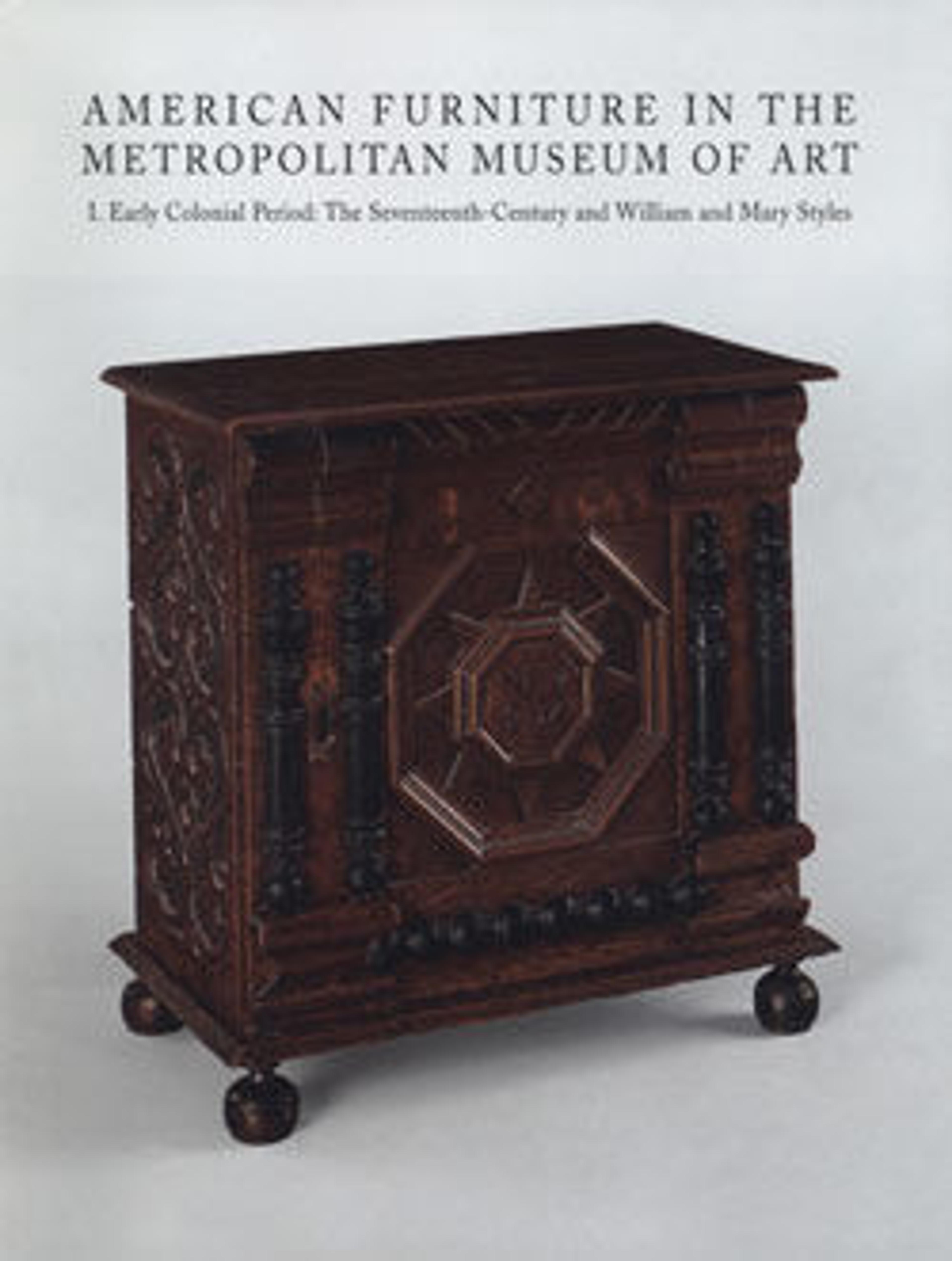Joined armchair
The most imposing chairs in seventeenth-century New England were the joined-oak armchairs with panel-and-frame backs carved in the same manner as chests. Based on English Renaissance and Mannerist designs, this example, with its solid, vigorous form enlivened by carving, has a commanding presence. Its massive rear posts taper on the front surface toward the crest and foot, resulting in a back that slants to accommodate the human form and in legs that are lightened. The carving, which consists of a double arcade, intersecting lunettes with stylized foliage, and S-scrolls, creates a lively interplay of semicircles, circles, and vertical accents. The square pillars, used instead of turnings to ornament the front posts (part of the vocabulary of Mannerist decoration), are an unusual feature in New England furniture of the period known primarily on this and five related chairs. Several of these chairs have histories associating them with Essex County, Massachusetts.
Artwork Details
- Title: Joined armchair
- Date: 1650–1700
- Geography: Made in Essex County, Massachusetts, United States
- Culture: American
- Medium: Oak
- Dimensions: 36 1/2 x 23 x 16 3/4 in. (92.7 x 58.4 x 42.5 cm)
- Credit Line: Purchase, Friends of the American Wing and Sansbury-Mills Funds, Mr. and Mrs. Robert G. Goelet Gift, Mrs. Muriel Gluck Gift, in honor of Virginia and Leonard Marx, and The Max H. Gluck Foundation Inc., The Virginia and Leonard Marx Foundation, and Mr. and Mrs. Eric Martin Wunsch Gifts, 1995
- Object Number: 1995.98
- Curatorial Department: The American Wing
More Artwork
Research Resources
The Met provides unparalleled resources for research and welcomes an international community of students and scholars. The Met's Open Access API is where creators and researchers can connect to the The Met collection. Open Access data and public domain images are available for unrestricted commercial and noncommercial use without permission or fee.
To request images under copyright and other restrictions, please use this Image Request form.
Feedback
We continue to research and examine historical and cultural context for objects in The Met collection. If you have comments or questions about this object record, please contact us using the form below. The Museum looks forward to receiving your comments.
